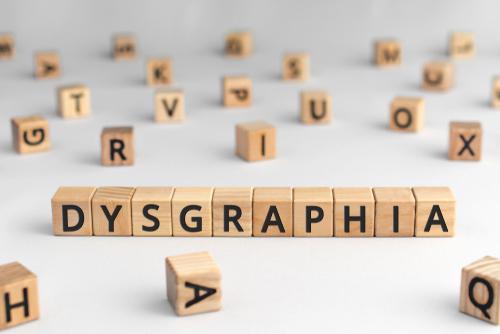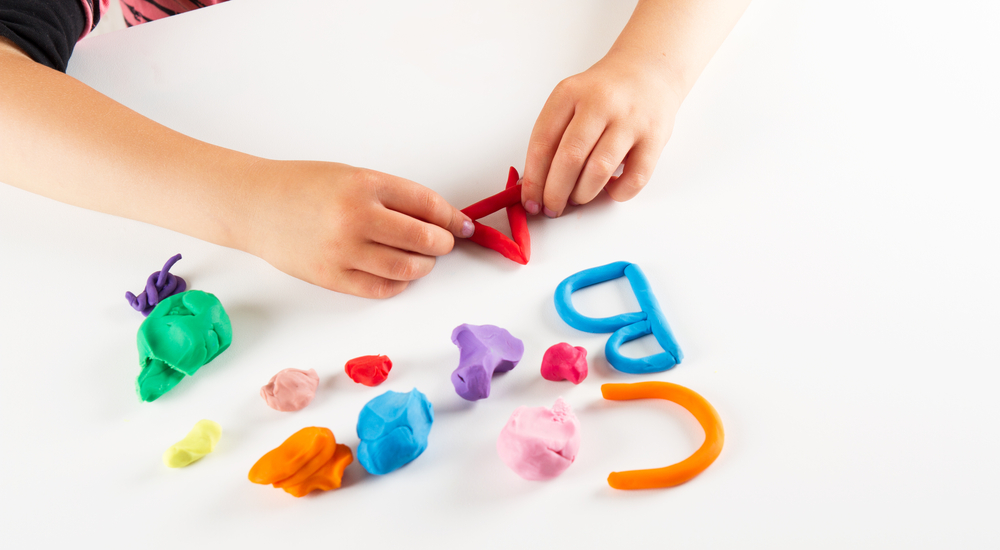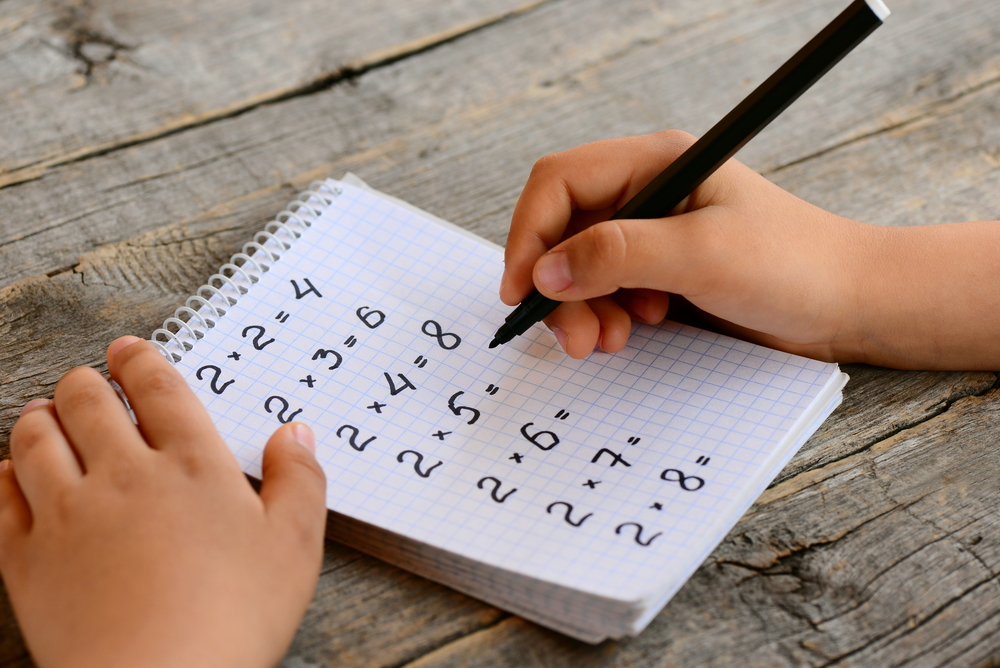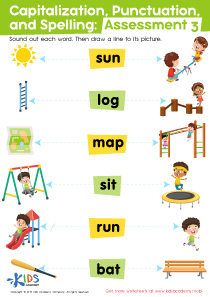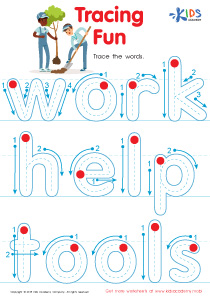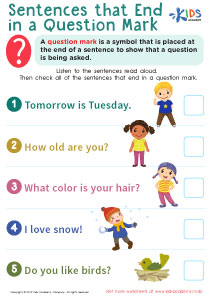Fine motor skills development Writing Worksheets for Ages 3-8
12 filtered results
-
From - To
Enhance your child's fine motor skills with our targeted writing worksheets, specially crafted for ages 3-8. These engaging printable activities are designed to develop essential hand muscles, improve pencil grip, and boost hand-eye coordination. From tracing lines to forming letters and shapes, our worksheets create a solid foundation for handwriting proficiency while making learning fun. With vibrant illustrations and age-appropriate challenges, young learners stay motivated and excited to practice daily. Support your child's journey to mastering fine motor skills - visit Kids Academy today for a range of expertly developed resources that grow with your child's progress.
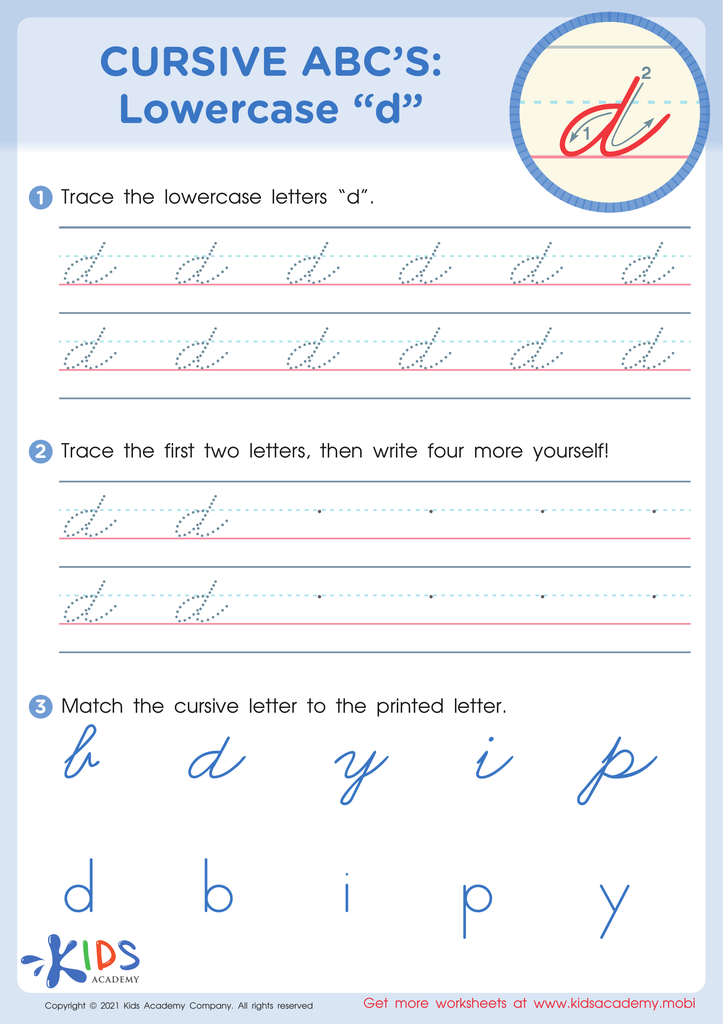

Cursive ABCs: Lowercase d
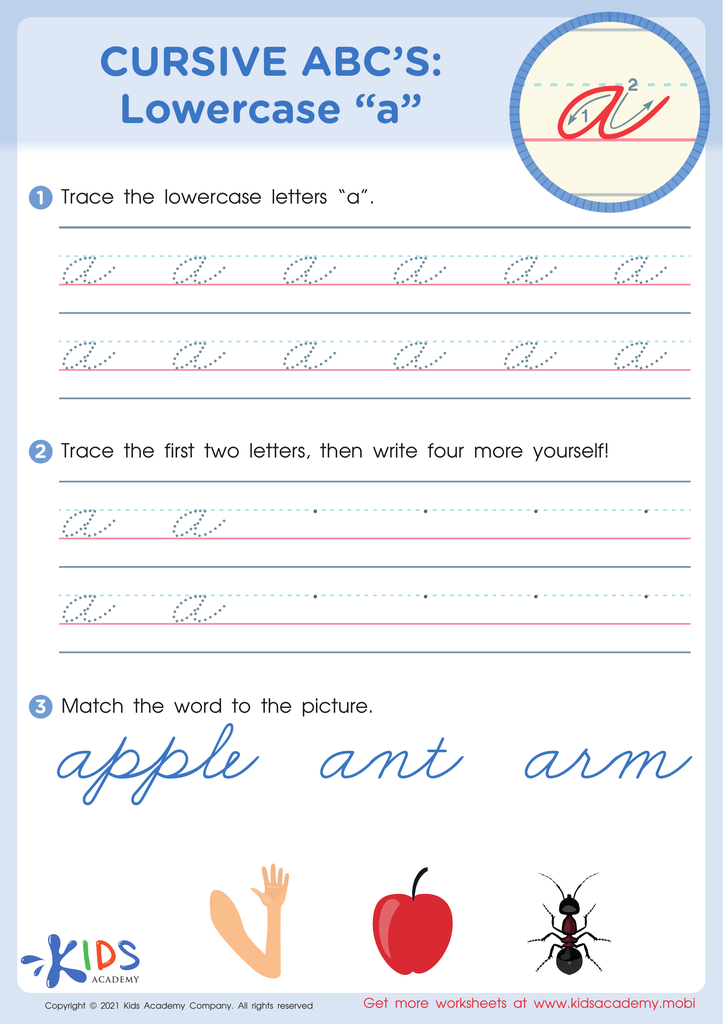

Cursive ABCs: Lowercase a
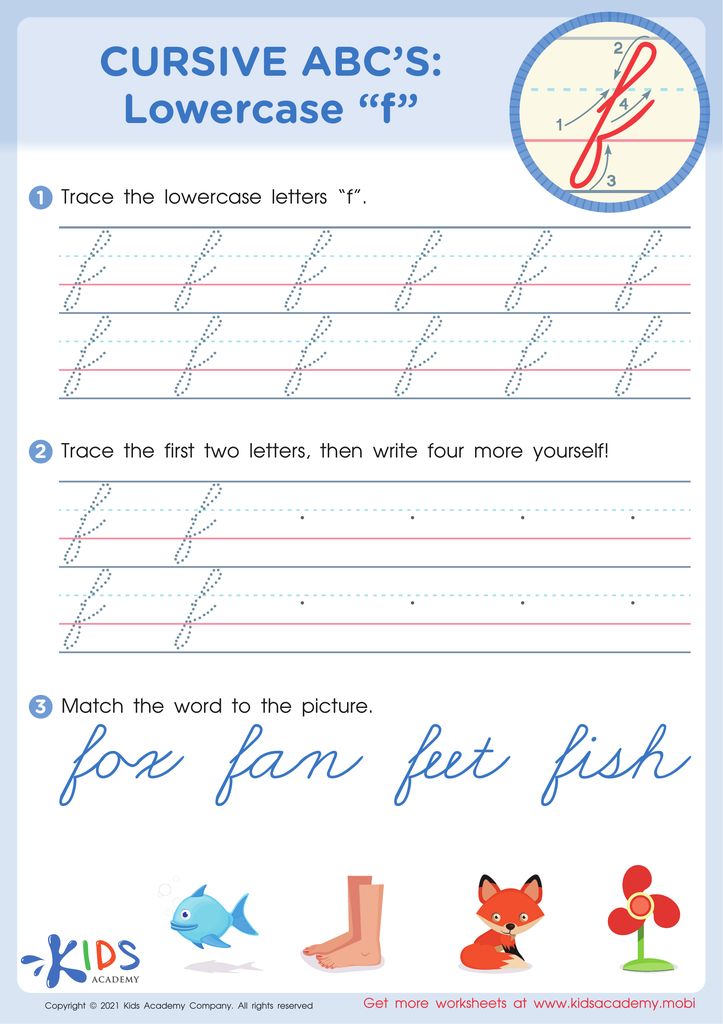

Cursive ABCs: Lowercase f
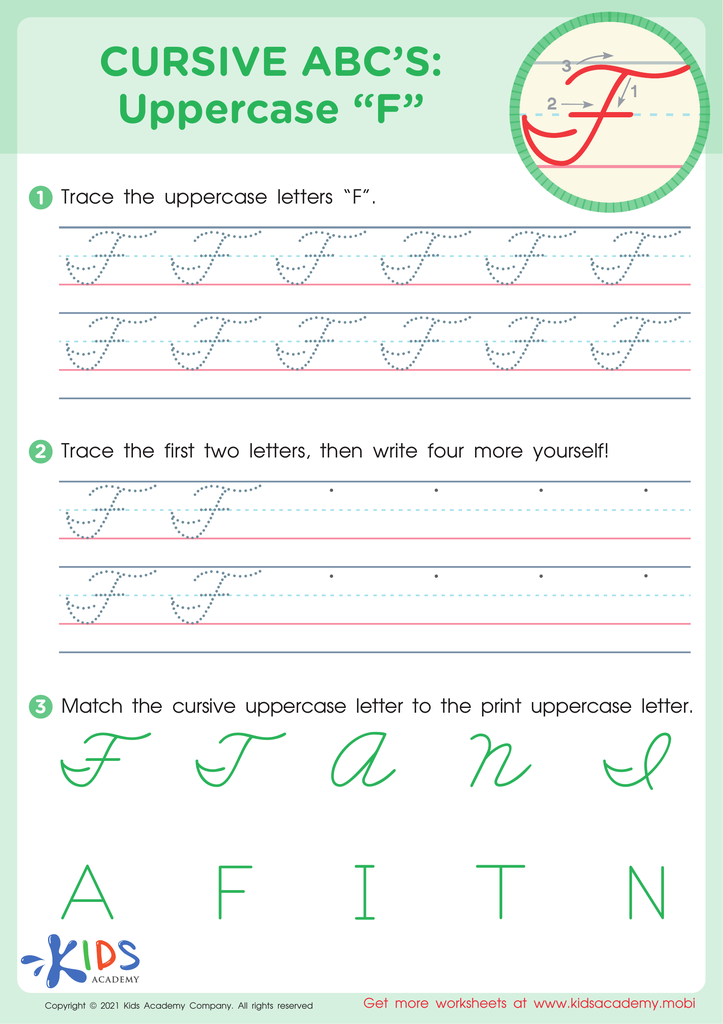

Cursive ABCs: Uppercase F


Cursive ABCs: Uppercase G
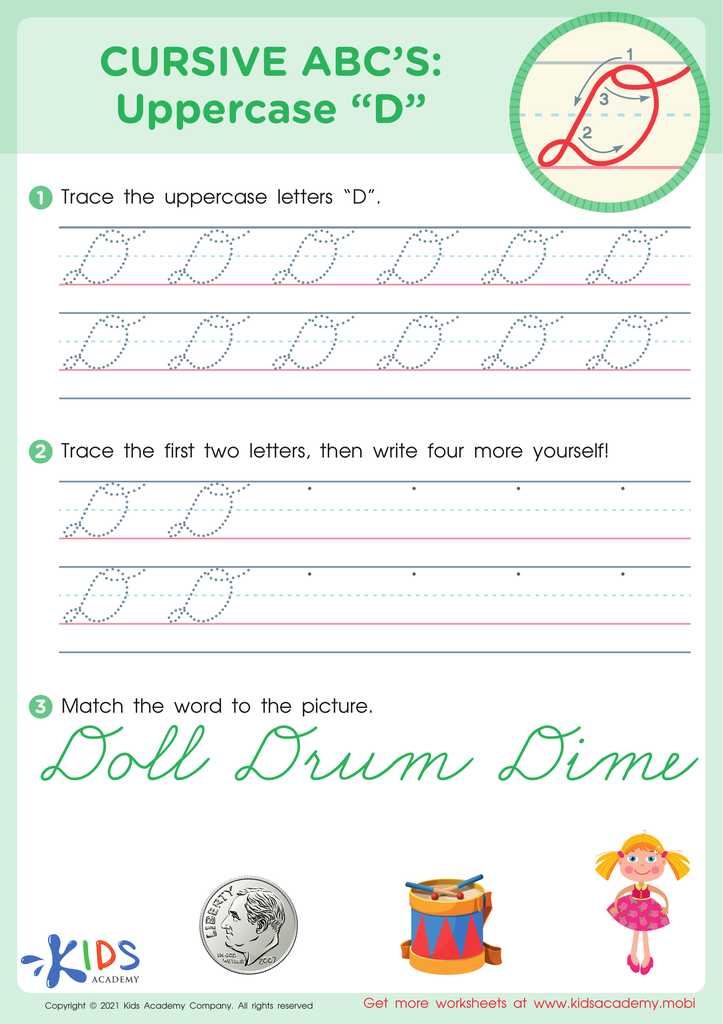

Cursive ABCs: Uppercase D
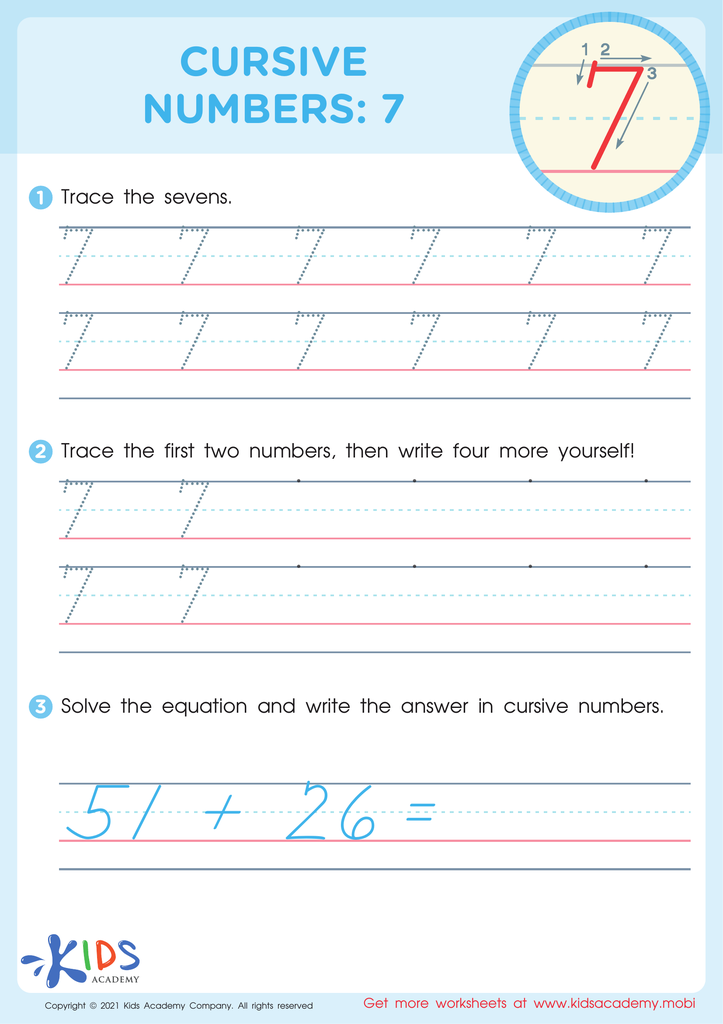

Cursive Numbers: 7 Worksheet
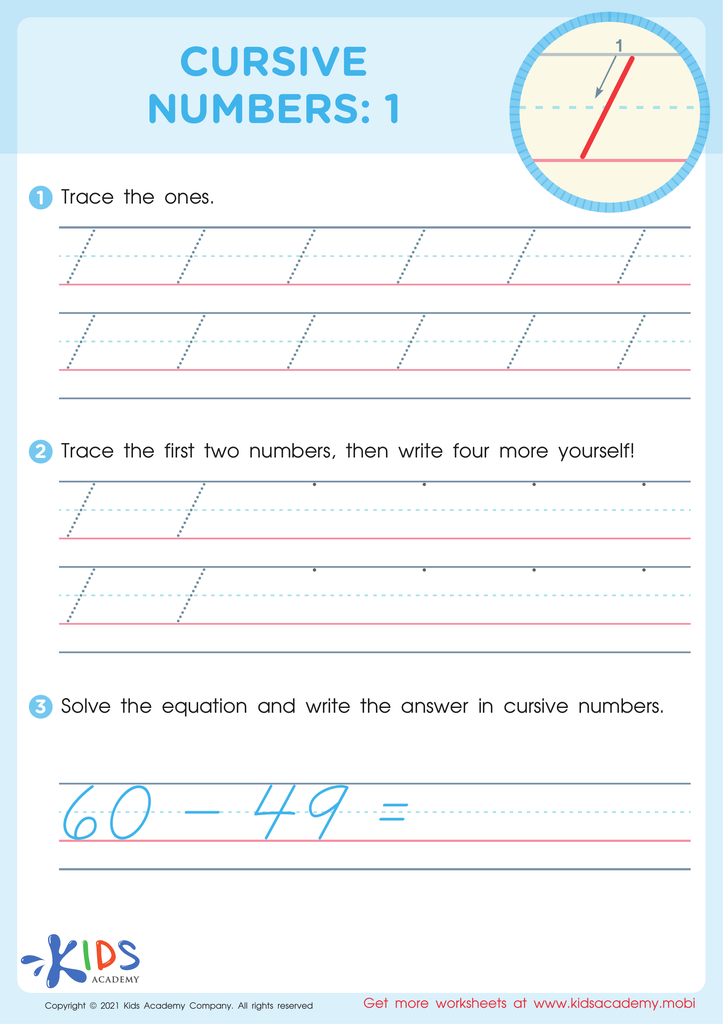

Cursive Numbers: 1 Worksheet
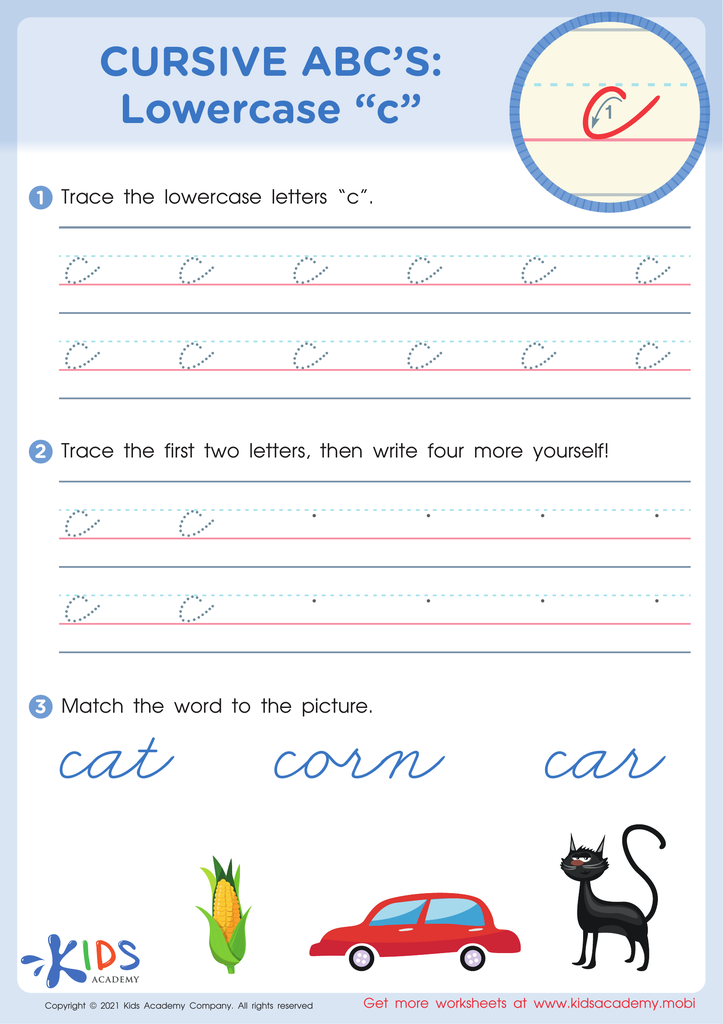

Cursive ABCs: Lowercase c
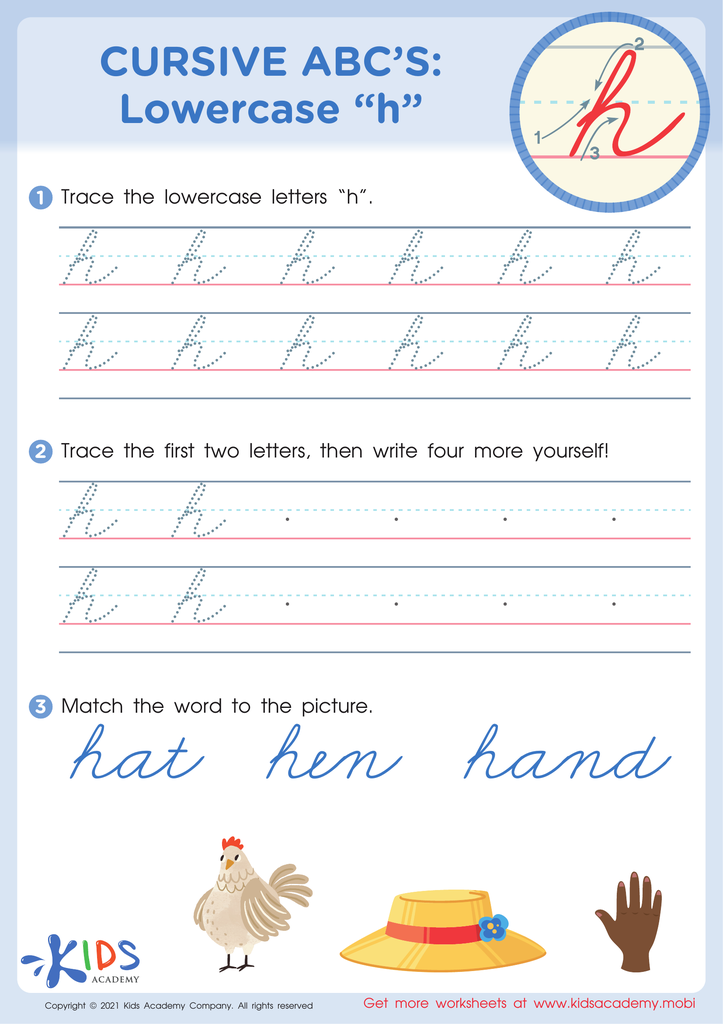

Cursive ABCs: Lowercase h


Cursive ABCs: Lowercase b
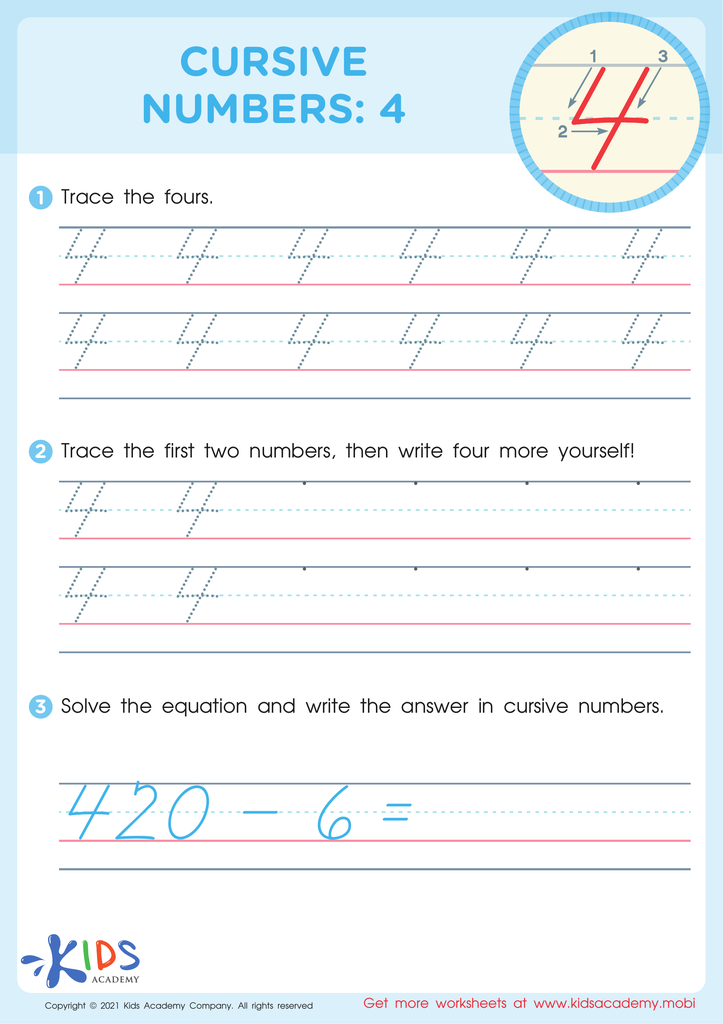

Cursive Numbers: 4 Worksheet
Fine motor skills are crucial for young children, particularly in the development of writing abilities for ages 3-8. These skills involve the coordination of small muscles, particularly in the hands and fingers, allowing children to perform precise movements. The development of fine motor skills is pivotal for writing, as it enables children to grasp and control writing tools, form legible letters, and maintain the stamina for writing activities.
When parents and teachers focus on nurturing these skills, children can more easily meet age-appropriate academic benchmarks, boosting their confidence and enjoyment in learning. Fine motor skills are also fundamental for other essential tasks, such as buttoning clothes, tying shoelaces, and using utensils. Without properly developed fine motor skills, children may struggle, leading to frustration and a reluctance to engage in tasks requiring these abilities.
Moreover, fostering fine motor skills from an early age can enhance a child's overall cognitive development and dexterity, setting a strong foundation for future educational and everyday activities. Through targeted activities like playdough manipulation, cutting with scissors, and beading, parents and teachers can effectively support children's fine motor development, ensuring they acquire the essential skills needed for writing and broader academic success.




